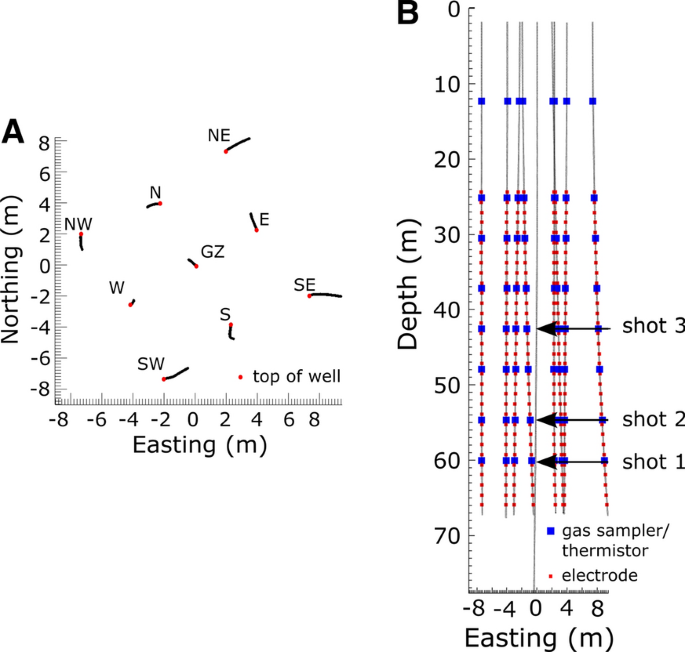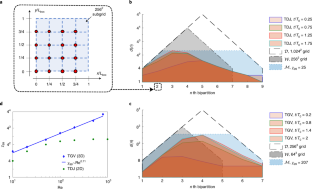PNNLの新しい研究により、両者の区別が容易になりました New PNNL research makes it easier to differentiate between the two
2023-01-03 パシフィック・ノースウェスト国立研究所(PNNL)
地下で爆発が起こると、ガスは地中の割れ目を通って、大気中に逃げます。Xenon InternationalやRASAのような機器は放射性核種ガスを検出することができますが、ガスが通過しなければならない岩石の損傷によって、その化学的シグネチャーが大きく影響されることがあります。
PNNL地球システム科学部門の地球科学者ハンター・ノックスと計算科学者ティム・ジョンソンは、ある日マイリーのオフィスを訪れ、岩石の損傷パターンがガスの流路に及ぼす影響を調査することを提案した。その成果は『Pure and Applied Geophysics』誌に掲載され、地下のガス流を理解する上で大きな転換をもたらした。
爆発後のガスが通る経路の中に、その起源を知る手がかりが隠されているのです。世界中のモニターは大気中の微量の放射性核種を検出することができますが、放射性同位元素が爆発によるものか、医療用同位元素の生産などの他の活動によるものかを区別することはできません。
「この研究は、核爆発が起こった場合、その際に発生する放射性ガスをいつ検出するのか、というタイミングを知るのに役立ちます。この情報を地震学的データおよび放射性核種検出と組み合わせることで、爆発が化学的性質のものか核的性質のものかを判断する際の不確実性を減らすことができます」とジョンソン教授は述べています。
最終的に、この研究は、市民の安全を守るための世界的な核不拡散の取り組みを補強するものです。
<関連情報>
- https://www.pnnl.gov/news-media/was-explosion-chemical-or-nuclear
- https://link.springer.com/article/10.1007/s00024-022-03165-y
2つの地下化学爆発による岩石損傷パターンとガス流路の3次元タイムラプス電気抵抗イメージング 3D Time-Lapse Electrical Resistivity Imaging of Rock Damage Patterns and Gas Flow Paths Resulting from Two Underground Chemical Explosions
Tim C. Johnson,H. A. Knox,C. Strickland,C. Johnson,J. Lowrey,D.P. Sprinkle,D. Linneman,V. Vermeul,E. Robey,K. Chojnicki,M. Ingraham,J. Feldman & H. Miley
Pure and Applied Geophysics Published:28 November 2022
DOI:https://doi.org/10.1007/s00024-022-03165-y

Abstract
Rock damage from underground nuclear explosions (UNEs) has a strong influence on sub-surface gas movement and on seismic waveform characteristics, both of which are used to detect UNEs. Although advanced numerical simulation capabilities exist to predict rock damage patterns and corresponding detection signals, those predictions are dependent on (generally) unknown properties of the host rock. For example, the effects of in-situ mechanical heterogeneities on the explosively generated damage/fractures that provide gas flow pathways to the surface are not well understood, due largely to the difficulty in accessing and characterizing the near-source region. In this paper we demonstrate the emerging use of electrical resistivity tomography (ERT) for imaging rock damage and gas flow patterns resulting from two relatively small-scale underground chemical explosions. Pre-explosion ERT and crosshole seismic imaging revealed a natural fracture zone within the test bed. Post-explosion imaging revealed that the damage zone was non-symmetric and was focused primarily within the pre-existing fracture zone, located 10 m above the first explosion and 5 m above the second explosion. Time-lapse ERT imaging of heated air injected into the detonation borehole revealed the primary gas flow paths to be within the upper margin of the same primary damage zone. These results point to the utility of ERT imaging for understanding rock damage and gas flow patterns under experimental conditions, and to the importance of understanding the effects of geologic heterogeneity on UNE detection signals, particularly gas surface breakthrough times.



